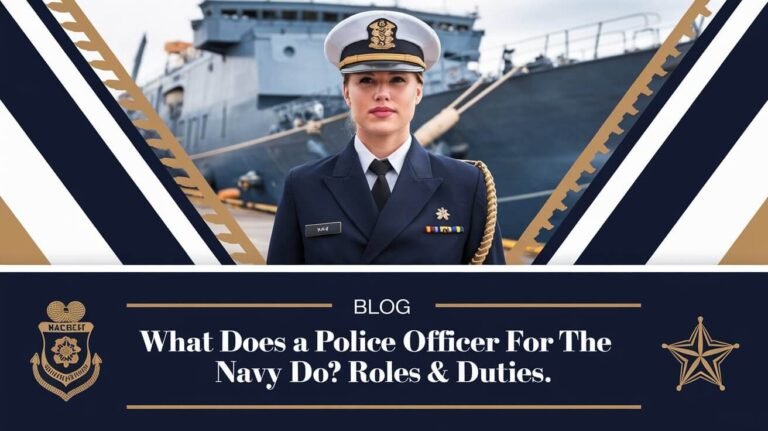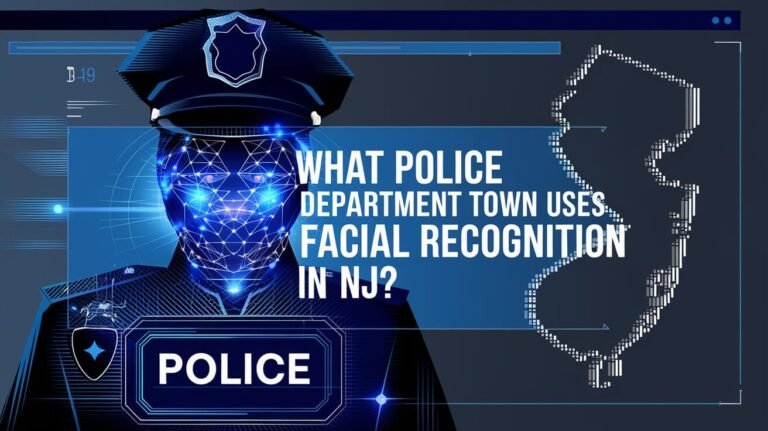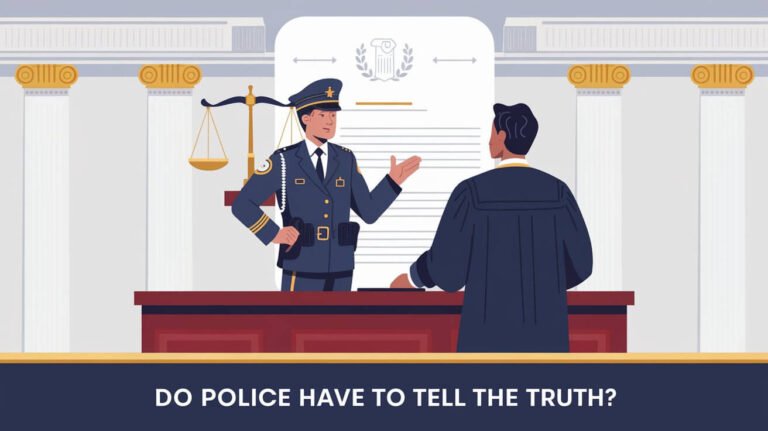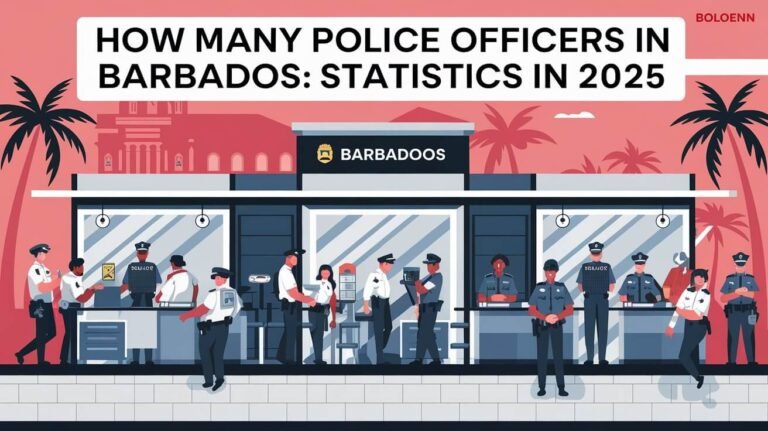Why Do Police Touch The Tail Light: Crucial Safety Tactic Revealed
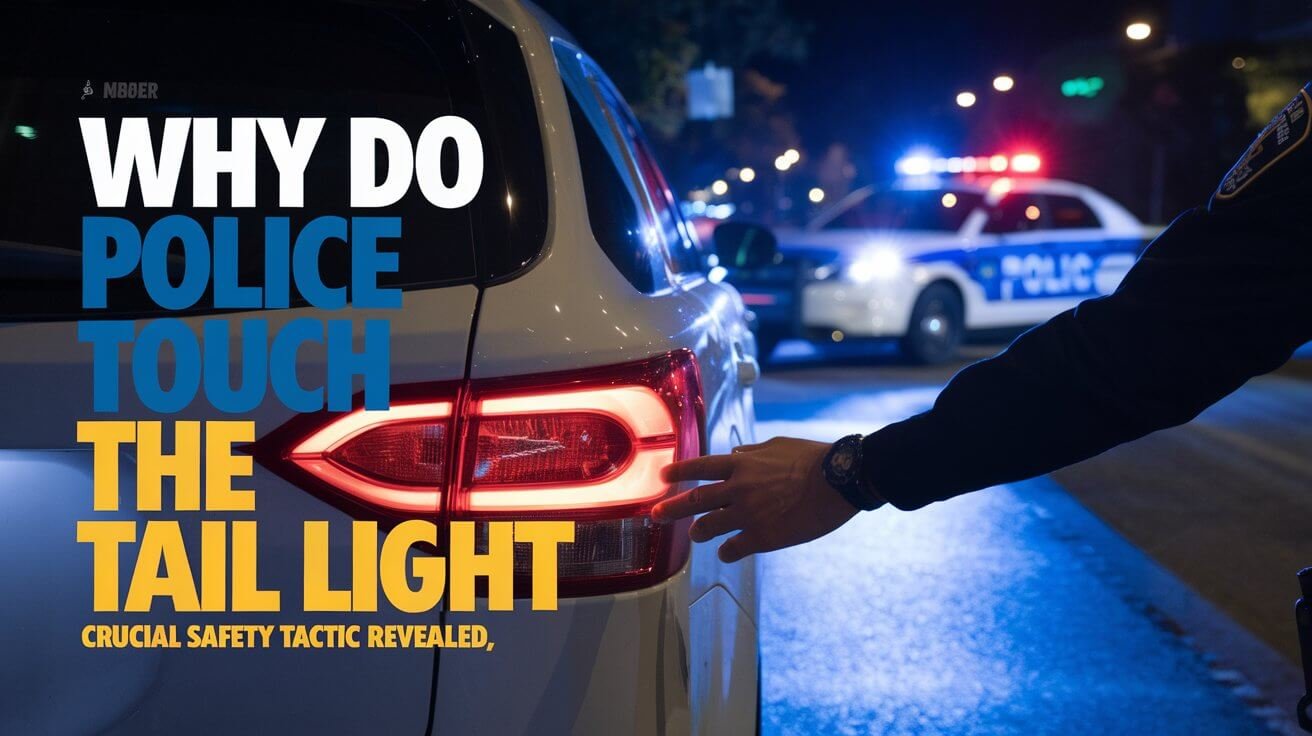
In law enforcement, touching a vehicle’s tail light during a traffic stop is common. But why do police officers do this? It’s a question that has sparked curiosity and debate for a long time.
This simple gesture might hold more meaning than we think. It could reveal the complex relationship between law enforcement and drivers. Let’s explore the reasons behind this practice.
History Behind Police Tail Light Contact
The tradition of police officers touching a vehicle’s tail light during a stop is rich in history. This simple action holds deep meaning in the evolution of policing. It shows how law enforcement methods have changed over time.
Origins of the Practice
The tail light touch started as a safety measure for officers. It allowed them to leave fingerprints as evidence of their presence. This was crucial before cameras became common.
Evolution Through Decades
Over the years, touching the tail light became a standard for police. It evolved from a safety measure to a habit. Even with cameras in police cars, some agencies still teach this practice.
Traditional Law Enforcement Methods
The tail light touch was key before modern tech. It helped prove an officer’s role in a stop or investigation. Though less needed today, it remains a part of many officers’ routines.
| Year | Policing Tactic | Technology Adoption |
|---|---|---|
| 1950s-1970s | Tail light touch for fingerprint evidence | Limited use of cameras and recording devices |
| 1980s-1990s | Continued use of tail light touch | Increasing adoption of dashboard cameras |
| 2000s-2010s | Tail light touch still practiced by some departments | Widespread use of body cameras and surveillance systems |
| Today | Debate over the necessity of the tail light touch | Advanced technology and data-driven policing methods |
“The taillight tap is still a common practice but is no longer taught to every police officer. It’s considered a simple but potentially crucial evidence of a police officer’s presence, particular in the event of a technological glitch.”
The Science of Fingerprint Evidence
Fingerprint evidence is key in criminal investigations, even for simple traffic stops. Police officers often touch vehicle parts, leaving their prints. This has been a common practice for a while, but understanding the science behind it is crucial.
Fingerprints on a vehicle can link an officer to the scene, which is important in case of an incident. But, rain, snow, or the vehicle’s state can damage these prints. Unlike prints on other surfaces, vehicle prints are more prone to smudging or tampering.
Today, forensic science has moved beyond just fingerprints. DNA analysis and digital evidence are now more important in solving crimes. Yet, touching a vehicle’s tail light remains a common practice for police. It offers a way to gather evidence and protect officers in certain situations.
“The purpose is to connect officers to the vehicle in case of an incident during a traffic stop.”
– William Johnson, Executive Director of the National Association of Police Organizations
| Forensic Evidence Type | Reliability | Limitations |
|---|---|---|
| Fingerprints | Moderate | Susceptible to environmental factors, smudging, and tampering |
| DNA Analysis | High | Requires sufficient biological material, can be time-consuming |
| Digital Evidence | High | Dependency on technology, potential for data manipulation |
Fingerprints are still useful in some investigations, like traffic stops. But, their limitations and the growth of forensic science have made them less relied upon. The science of fingerprint analysis is evolving. It now supports a broader approach to collecting and analyzing forensic evidence.
Why Do Police Touch The Tail Light
Police officers touching the tail light of cars during stops is a common practice. It helps keep officers safe and improves their policing skills.
Primary Safety Considerations
Touching the tail light helps officers check if the driver is okay. It can surprise the driver, stopping them from hiding things. This lets officers see if there’s anything wrong.
Tactical Advantages
Touching the tail light gives officers more time to look around. They can spot dangers or crimes more easily. Some police are taught to touch the side of the car instead. This makes them safer during the stop.
Officer Protection Protocols
Touching the tail light also leaves fingerprints on the car. This is very useful if the stop turns bad or if the car is used in a crime. It helps officers keep everyone safe and do their job well.
Physical Evidence in Traffic Stops
Police officers touching the tail light during stops has been a topic of debate. This action was once seen as a safety measure. But, the role of this evidence has changed with new technology.
Before dash and body cameras, touching the tail light was a way to leave evidence. It helped find missing officers or support criminal investigations. The fingerprints could be key in these cases.
Now, digital evidence from cameras is more important. Officers use audio and video to record their interactions. This makes the need for touching the tail light less important.
“The practice of touching the tail light is still considered a safety protocol by some law enforcement agencies, as it allows officers to verify the trunk is securely closed and ensure there are no hidden threats within the vehicle,” explains criminologist Dr. Sarah Williams.
Even though it’s less important, touching the tail light still has uses. It can startle drivers, helping officers see if they hide illegal items. It also checks if the trunk is closed, keeping everyone safe.
The debate on touching vehicles during stops is ongoing. Police must balance safety, efficiency, and old methods. They aim to protect and serve their communities well.
Trunk Safety Verification Methods
Police officers often check a vehicle’s trunk during traffic stops. This is part of their safety checks. They make sure the trunk is closed and look for hidden spots that could be dangerous.
Hidden Compartment Checks
Officers touch the rear of the car to find hidden spots. These could hide weapons, drugs, or people. This check helps them know if the car is safe before they talk to the driver or passengers.
Vehicle Security Protocols
Checking the trunk is key to keeping officers safe. It makes sure there are no surprises, like someone hiding in the trunk. This helps prevent unexpected dangers.
Passenger Safety Assessment
Checking the trunk, officers can see if the car and people inside are safe. This helps them decide how to handle the stop. It keeps everyone safe during the traffic stop.
| Inspection Method | Purpose | Potential Outcomes |
|---|---|---|
| Trunk Latch Check | Verify secure trunk closure | Prevent surprise from hidden occupants |
| Compartment Inspection | Identify potential hidden areas | Detect weapons, contraband, or other threats |
| Passenger Assessment | Evaluate overall vehicle safety | Determine appropriate response and precautions |
Modern Technology vs Traditional Tactics
In today’s law enforcement, technology has made the old tail light touch unnecessary. Cameras and dash cams now give better digital evidence. Yet, some officers still use the tail light touch, either as a backup or out of habit.
The move from touching to digital evidence has changed traffic stops. Police technology lets officers record interactions in detail. This change affects how police work and how they keep digital evidence.
| Technique | Advantages | Disadvantages |
|---|---|---|
| Touching Tail Light | Potential for forensic evidence Tactile confirmation of trunk security | Perceived as intrusive by public Possibility of contaminating evidence |
| Security Cameras/Dash Cams | Reliable digital evidence Transparent record of interactions | Potential for technical malfunctions Privacy concerns regarding recordings |
As police technology gets better, the old ways will fade more. Digital evidence will play a bigger role in traffic stops. This change shows how law enforcement is modernizing, focusing on being open and accountable.
Daily Traffic Stop Statistics
Law enforcement officers across the United States are key to keeping our roads safe. The Stanford Open Policing Project shows they make over 20 million traffic stops each year. This averages out to about 50,000 stops every day.
These numbers show how often police and drivers meet during traffic stops. It’s a big part of keeping our roads safe.
National Stop Data
There are so many traffic stops, safety is crucial for everyone. In the past, touching a car’s taillight was a common way for police to mark a vehicle. But now, it’s not taught or used as much.
Younger officers might not know about this old method. This is because police training and rules have changed over time.
Officer Safety Records
Even with new ways of policing, keeping officers safe is still a top priority. Data shows that traffic stops can be risky. This makes training and clear rules very important.
Knowing the history and current needs of traffic stops, we can all help make things safer. This includes both officers and the public.
“Leaving a thumbprint on the brake light is an old-school way to tag a car with a fingerprint for identification purposes. The officer’s touch to the car’s taillight leaves fingerprint evidence on the glass to prove that the officer was present at the scene.”
Even though touching taillights isn’t used as much today, the need for officer safety and collecting evidence is still key. As police work changes, departments must find a balance. They need to use old and new methods to keep everyone safe.
Officer Safety During Vehicle Approaches
Approaching a vehicle during a traffic stop is very dangerous for police. They are trained to be cautious and use techniques like the tail light touch. The Ridgely Police Department teaches officers to position their vehicle safely during stops.
Touching the rear of a car is a long-standing practice in law enforcement. It was once used to leave a thumbprint on the brake light. This helped identify the vehicle if the officer was hurt.
| Statistic | Value |
|---|---|
| Police officers killed during routine traffic stops last year | 7 |
| Drivers pulled over by law enforcement on a typical day | More than 50,000 |
| Motorists stopped annually by law enforcement | Over 20 million |
While body cameras have made this practice less necessary, some police still teach it. It’s a habit for some, but younger officers might not know it’s part of their training.
“Touching the back of a car is described as a routine part of a traffic stop,” says Trooper Steve Montiero, reflecting the continued prevalence of this practice in certain law enforcement agencies.
Approaching a stopped vehicle is risky. A study found that about 30% of police shootings happen during these stops. This shows how crucial police officer safety and traffic stop risk mitigation are.
As law enforcement training changes, so might the role of the taillight touch. But keeping officers safe during vehicle approaches is always a top priority in policing.
Departmental Policies on Vehicle Contact
Police officers touching a vehicle’s tail light during stops has been common for years. But, policies on this action differ from one police department to another. Some still teach it, while others have stopped due to safety and tech advancements.
Regional Variations
In the U.S., how police view touching a tail light varies by region. Some places still use it to gather evidence and check for threats. Others have stopped it due to safety and tech changes. This makes traffic stops inconsistent, even in the same area.
Training Requirements
Training on touching a tail light also varies. Some police schools still teach it, highlighting its benefits. Others have removed it, focusing on safer and more efficient ways to stop traffic. This difference in training leads to uneven use of the practice, even among the same department’s officers.
The rules and training on police and vehicle contact during stops are always changing. This change reflects the evolving world of law enforcement. It aims to balance officer safety, community trust, and effective policing.
Digital Evidence Collection Methods
Today, police use digital tools to improve their investigations. Body cameras, dash cams, and CCTV footage have replaced old methods. These tools give clear evidence of police actions, making cases stronger.
Digital forensics is key in law enforcement. Special units handle electronic evidence. For example, the Anne Arundel County Police has a Digital Forensic Lab. It ensures evidence is kept safe and analyzed correctly.
When taking digital devices, officers must be careful. They follow strict rules to keep evidence safe. This includes documenting and submitting devices to experts for analysis.
The use of police technology has changed how evidence is handled. Tools like AFIS and mobile scanners help identify suspects quickly. This makes solving crimes faster and more accurate.
| Fingerprint Scanning Technology | Key Advancements |
|---|---|
| Manual Fingerprinting | Traditional method using ink and paper |
| Automated Fingerprint Identification Systems (AFIS) | Digitized fingerprint storage and database searches introduced in the 1980s |
| Live Scan Technology | Electronic fingerprint capture implemented in the 1990s, eliminating the need for ink and paper |
| Mobile Fingerprint Scanners | Enabling field use for rapid suspect identification and identity verification, with remote database access |
Law enforcement is moving towards digital evidence collection. This change is making investigations more accurate and reliable. It’s a big step forward in digital forensics, police technology, and electronic evidence handling.
Changes in Police Procedures Over Time
Law enforcement has changed a lot over the years. It shows how policing has adapted to new needs and abilities. Now, police don’t often touch the tail lights of cars during stops.
The tail light touch was once a way to keep officers safe. But, with more violence against police, new methods are needed. Cameras have become common, making the old way less necessary.
Even so, some police still tell officers to leave fingerprints on cars. This shows how police tactics are still evolving. They mix old and new methods to face today’s challenges.
Common Concerns
Why do police touch the tail light during traffic stops?
Police touch tail lights for safety, to gather evidence, and to check the driver’s state. They look for potential dangers.
What is the history behind this police practice?
The tail light touch started as a safety measure. It evolved over decades. It was used to leave fingerprints before cameras became common.
How does fingerprint evidence from the tail light help in criminal investigations?
Fingerprint evidence from tail lights was once key in investigations. But, it’s less important now due to environmental factors and fingerprint analysis limits.
What are the primary safety considerations behind the tail light touch?
The tail light touch startles drivers, possibly stopping them from hiding illegal items. It helps officers check the driver’s reaction and the vehicle’s occupants. It also gives time for security checks.
How is the physical evidence from the tail light touch used in traffic stops?
The evidence from the tail light touch proves an officer was there. It’s important in criminal investigations. But, modern tech has made it less necessary.
Why do officers check the vehicle’s trunk during a traffic stop?
Officers check the trunk to make sure it’s closed. This prevents surprises from hidden people. It’s part of vehicle security checks and helps find hidden compartments.
How have modern technologies impacted the use of the tail light touch?
Modern tech like cameras has made the tail light touch less needed. Yet, some officers still use it, either out of habit or as a backup.
What are the daily statistics for traffic stops in the United States?
The Stanford Open Policing Project says over 20 million people are stopped each year. That’s about 50,000 stops daily. These numbers show how common traffic stops are and why safety protocols are crucial.
How do police officers approach vehicles during traffic stops?
Approaching vehicles is very dangerous for police. They are trained to be cautious. Techniques like the tail light touch help keep them safe.
How do departmental policies differ on the use of the tail light touch?
Policies on the tail light touch vary. Some departments still teach it, while others don’t. Training for new officers may or may not include it.

